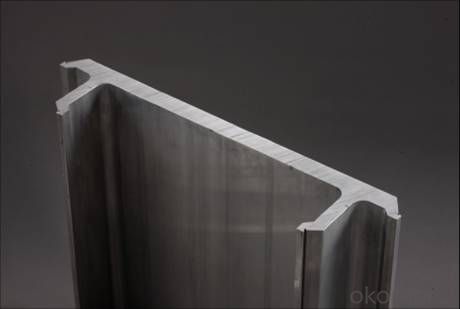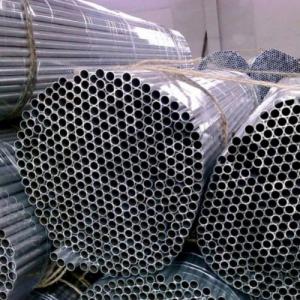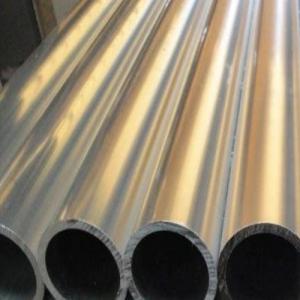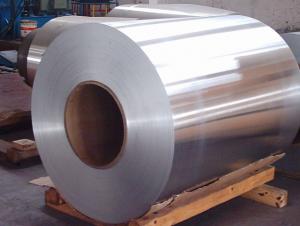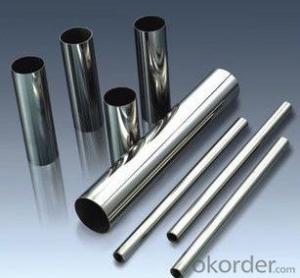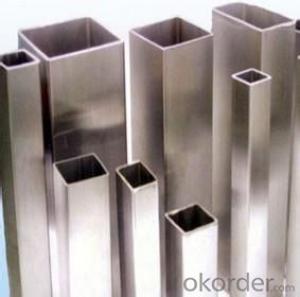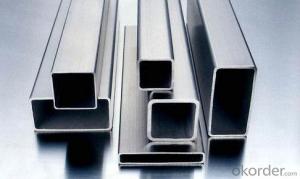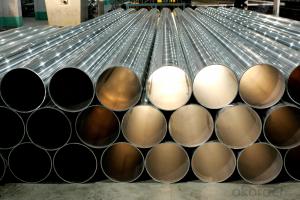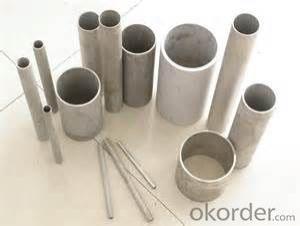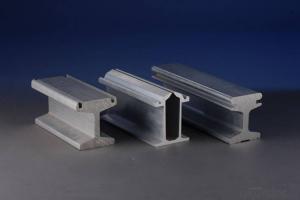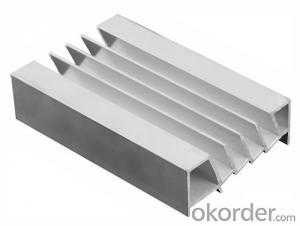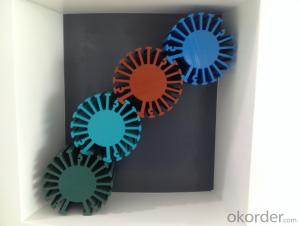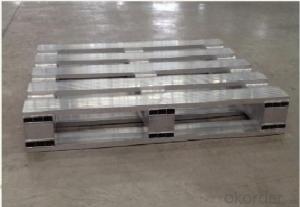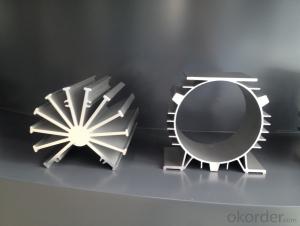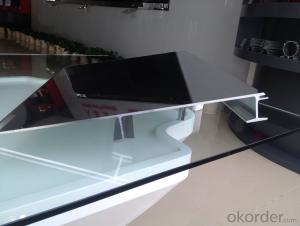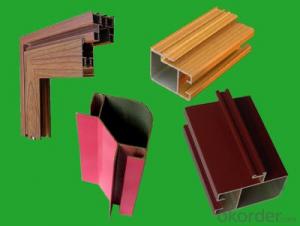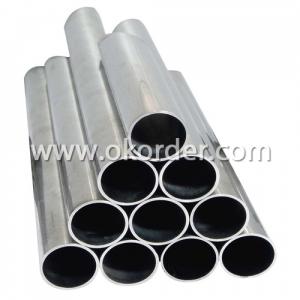Aluminum Pipes Subway Floor Aluminum
OKorder Service Pledge
OKorder Financial Service
You Might Also Like
We are the largest aluminum profilemanufacture in
Material | Alloy Aluminum 6063,6061,6005,6082 or customer nominated |
Temper | T3, T4, T5, T6 and other |
Surface | Anodize, electrophoresis, powder coating, PVDF coating, etc. |
Colour | Any colour based on Standard Germany RAL Mark |
Length | Not more than 16 meters |
Good Package | Inner plastic film /outside carton/wooden pallets |
Payment Method | T/T, L/C, etc |
Delivery Time | Normally 2-4 weeks, Delivery time can be consulted. |
Press Machine | 500-12500 tons all together 93 press lines. |
Fabrication | 1. Subway; 2. Drilling; 3. Welding; 4. Cutting; 5. etc. |
Certificate | ISO/TS 16949,DNV,IRIS,CCS,AFA,etc. |
Dies | 1. Using our dies, no fee; |
2. Using customer drawing, opening dies, usually about 5~50 tons then the dies cost can be refunded. | |
3. Die cost is negotiable base on the order quantity | |
Capability | Annual output 800,000 tons |
- Q: What brand of aluminium tube is in freezer?
- 7075 chemical compositionFerrosilicon, copper, manganese, magnesium, chromium, nickel, zinc, titanium, other (3) aluminum (4)Each total0.4, 0.5, 1.2-2.0, 0.30, 2.1-2.9, 0.18-0.35 - 5.1-6.1, 0.20 (5), 0.05, 0.15, remainder
- Q: Can aluminum pipes be used for compressed air systems?
- Indeed, one can utilize aluminum pipes for compressed air systems. Aluminum pipes present numerous benefits when employed in compressed air applications. Primarily, the lightweight nature of aluminum facilitates handling and installation processes. Moreover, aluminum pipes possess corrosion resistance, an essential characteristic for preserving the integrity of the compressed air system. The smooth interior surface of aluminum pipes further reduces friction and pressure loss, thereby enhancing air flow efficiency. Additionally, aluminum is non-toxic and does not discharge any detrimental substances into the compressed air. In summary, aluminum pipes represent a dependable and economical option for compressed air systems.
- Q: Can 304 stainless steel aluminum pipe be welded with 6061?
- 304 stainless steel pipe6061 is aluminumWelding is difficult, it should not be fixed, consider other ways to butt it
- Q: Can aluminum pipes be anodized?
- Indeed, anodization is a feasible option for aluminum pipes. Anodization involves an electrochemical procedure that amplifies the inherent oxide layer present on the aluminum's surface. Through this method, a resilient and safeguarding coating is formed, offering enhanced resistance against corrosion, improved visual appeal, and additional functional advantages to the aluminum pipes. The process of anodizing can be applied to a diverse range of aluminum items, including pipes, to elevate their efficiency and lifespan.
- Q: What are the so-called "aluminum tubes" and "copper aluminum tubes" in air conditioners? Is it the pipe in the outer machine, or the connecting pipe between the outside machine and the inner machine?What materials are used in general external machines? For example, Panasonic, Midea, GREE, Haier, Changhong, CHIGO, Galanz, what are these materials used?
- The so-called "aluminum tube" in the air conditioner refers to the inner and outer parts of the air conditioner. The connecting pipe part may be made of aluminium tube, that is, the copper aluminum tube. And there are very other manufacturers using aluminum tubes on the evaporator or condenser.In the air-conditioning on the implementation of "aluminum instead of copper", there have been countless tests, the conclusion proved to be failure, it is impossible, is not reliable. In the air conditioning on aluminum and copper, can save the cost to a certain extent, reduce the price of air conditioner; however, all of this must be based on the safe operation of air conditioning, the service life of the air conditioner is not affected as the premise, without this premise, aluminum and copper also have no meaning.So far, no air-conditioning manufacturer's "aluminum bronze" project is successful; even more incredible is that there are still new manufacturers continue to join the promotion of this project.Aluminum and copper project, at the earliest in about 18 years ago, from the beginning of the refrigerator manufacturers, the refrigerator using R12 as refrigerant, and the whole system pressure is low, the particularity and the refrigerator pipeline application, does have a certain application in the refrigerator; from about 12 years ago at the beginning of each air conditioner to promote manufacturers Aluminum and copper in air conditioning project.
- Q: How do aluminum pipes perform in extreme weather conditions?
- Aluminum pipes are known for their exceptional performance in extreme weather conditions. Due to their inherent properties, including high strength-to-weight ratio and corrosion resistance, aluminum pipes can withstand a wide range of weather conditions without compromising their structural integrity. In extreme cold temperatures, aluminum pipes exhibit excellent thermal conductivity, allowing them to quickly dissipate heat and prevent freezing. This characteristic makes them highly suitable for applications such as refrigeration systems or pipelines in arctic regions, where maintaining fluid flow is crucial. On the other hand, in scorching hot weather, aluminum pipes are able to resist thermal expansion, ensuring that they remain dimensionally stable and do not deform under high temperatures. This quality is particularly advantageous in industries such as aerospace, automotive, or HVAC, where aluminum pipes are commonly used. Additionally, aluminum has a high melting point, providing further assurance of its performance in extreme heat. Furthermore, aluminum's corrosion resistance is a key factor in its ability to withstand harsh weather conditions. Aluminum naturally forms a protective oxide layer on its surface, which helps prevent rusting and deterioration caused by moisture, humidity, or exposure to acidic or alkaline environments. This makes aluminum pipes highly suitable for outdoor applications, where they are exposed to rain, snow, or other weather elements. However, it is important to note that extreme weather conditions, such as hurricanes, tornadoes, or severe earthquakes, can pose challenges to any material, including aluminum pipes. In such cases, the overall structural design, installation techniques, and additional reinforcements should be taken into consideration to ensure the pipes' performance and longevity. In summary, aluminum pipes perform exceptionally well in extreme weather conditions. Their thermal conductivity, resistance to thermal expansion, and corrosion resistance make them highly reliable in both cold and hot environments. However, it is essential to consider the specific application, installation methods, and potential external factors to ensure optimal performance and safety.
- Q: How can the refrigerator aluminum pipe leak?
- 2. Replace and repair evaporator. All need to be dug out from the freezing room, replaced, repaired, restored, and filled with a foaming agent, and then added refrigerant, the price is not expensive.
- Q: Please help to analyze the cause of the formation Fifty1070 aluminum rods are made of aluminum tubes from extrusion units. The process is: extrusion, melting - the mold passes through (the formation of aluminum tubes) - tap water cooling - closing - nitrogen charging and pressure maintaining. Therefore, the internal pipeline is nitrogen protection, and after a period of time, the pipeline will appear white powder, affecting resistance welding, welding is not firm, easy to fall off and leak.
- Landlord, that is the aluminum oxide (*^__^*) hee hee oh......
- Q: Can aluminum pipes be used for swimming pool systems?
- Yes, aluminum pipes can be used for swimming pool systems. Aluminum is a popular choice for pool systems due to its durability, resistance to corrosion, and lightweight nature. It is commonly used for piping, especially in areas with high moisture or corrosive conditions, making it a suitable option for swimming pool systems.
- Q: What are the different types of aluminum pipes available?
- There are several different types of aluminum pipes available, including seamless pipes, welded pipes, and extruded pipes. Seamless pipes are made by piercing a solid aluminum billet to create a hollow tube with no seams. Welded pipes are formed by joining two or more pieces of aluminum together using welding techniques. Extruded pipes are created by pushing heated aluminum through a die to achieve the desired shape and size. Each type of aluminum pipe has its own unique properties and applications.
Send your message to us
Aluminum Pipes Subway Floor Aluminum
OKorder Service Pledge
OKorder Financial Service
Similar products
Hot products
Hot Searches
Related keywords

